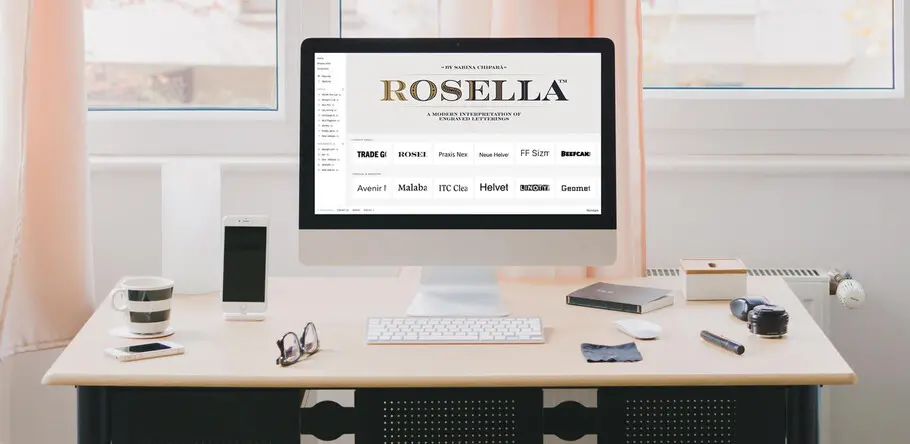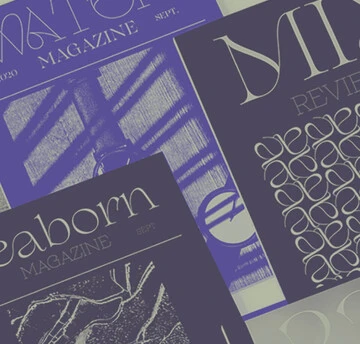The perils of piecemeal font licensing.

Brands don’t always evolve in a linear fashion. Growth is a series of successes and failures, adaptations and changes in focus. And as the brand evolves, so does its visual identity and font strategy. Brands will sometimes license fonts in parallel to their growth, adding weights, sizes, web fonts and other varieties of licenses, and even new typefaces as needs change and new use cases arise.
This may get the job done for a while, but brands tend to outgrow this approach as their products, teams, and markets expand. Can you make it work? Sure. But here’s why you may want to consider a more mature font strategy.
Who uses what font, again?
Piecemeal licensing requires diligent communication. Who can access the fonts? What font should be used in a particular situation? Where is each font stored? How widely can a specific font be deployed?
Ignoring or failing to communicate any one of these elements creates a snag in your teams’ workflow. Teams and individuals—especially geographically separated teams—will lose time trying to make sure they’re doing the right thing. In the best case scenario, this can be sorted out over a few emails or Slack messages, and the only consequence is lost time and a bit of frustration.
But sometimes, well-meaning but time-crunched teams will take matters into their own hands. That’s where the issues start to compound.
Close enough isn’t good enough
One primary consequence of that confusion is the use of substitute fonts. With a deadline looming and a frustrating font library, teams may just plug in something that looks similar to whatever they’re supposed to use.
This may not be a horrible end result, and your team may do a good job of finding a nearly identical font. But you still end up with a finished product that doesn’t look quite right. No brand wants that, especially on important assets.
Further, you risk the likelihood of duplicate work. Eventually, someone is going to flag these off-brand substitute fonts and want them fixed. Now your team has to go back and re-do the work, which of course impacts timing on other projects, and so on.
Creative liberties
If using nearly identical fonts is the not-too-terrible-but-still-not-great scenario, then here’s the worst-case one: Absent a consolidated, prescriptive library of fonts, teams or individuals may just pick whatever they want.
A good brand guide should prevent this from happening, but not all organizations have one, and the consequences can be significant. Unlike the previous example, this is a case where you can’t get away with it. The work either needs to be redone, which costs time and possibly money, or you have to accept an unexpected and potentially substantial departure from your brand identity.
This situation poses another risk: Your designer’s happiness. Designers are ultimately problem solvers, and faced with a looming deadline and a lack of clarity around assets, someone on your team may take a creative, if perhaps ill-advised stab at “making it work.” Having that work spiked and redone is not a satisfying experience for anyone, especially the designer who was simply trying to get the project done.
Poor customer experience
Mismatched fonts or slightly off-kilter designs create an uneven experience for your customers. This is especially noticeable if they experience different versions of your brand across environments and devices. Usability may also suffer if major components of your buyer’s journey are in different fonts across different touchpoints.
Brands simply can’t afford these disruptions to their visual identity, which can degrade customer loyalty and trust. This is especially true for banks and other businesses that handle sensitive financial information and need to project reliability. Would you give your money or credit card number to a company that can’t build a clean user experience?
Lawyer on line 1
When teams don’t know what fonts to use where, or go looking for substitute fonts, this exposes companies to some potentially serious legal headaches.
First off, some clarifications.
Like any piece of art or music, fonts are intellectual property. Someone dreamed up the design, owns it, and possibly trademarked or copyrighted it. When you need a font, you purchase a license to use the font in your work. That’s an important distinction: When you license a font, you are not buying the design. You are acquiring permission to use it.
The license document will spell out the ways you can and can’t use the font. There are numerous ways to misuse fonts, even properly licensed ones—using a desktop font in a digital ad, for example. In the cases mentioned here, one possible scenario might be a designer using a free font that isn’t approved for commercial use or that isn’t licensed for the correct number of impressions.
But whatever the situation, non-compliance can be costly. License violations can lead to back-licensing fees that cover the improper usage, not to mention the possibility of substantial investments in time and money to retrofit any ads, websites, or other assets where fonts were used in error. You might also find yourself pausing a project unexpectedly while the issue is sorted out.
Conclusion: Tie up those loose ends
Whether you’re a startup that recently hit the big time or a legacy brand with offices all over the world, having a messy font library is nothing to be embarrassed about. But it is a mess worth cleaning up.
First, take a step back and assess your organizational needs. How many use cases do you need to cover? How many impressions do your digital assets receive? How many workstations need access to your font library? And, perhaps most importantly, what kind of growth do you expect in the next six, twelve, or eighteen months?
At this point, the question is simple: does it make more sense to continue licensing fonts individually or through a comprehensive agreement? Comprehensive licenses package your needs into a single agreement, allowing fonts to be used and distributed properly and minimizing the risk of the wrong type showing up in the wrong place or hands.
Either way, it’s in everyone’s best interests to get it sorted out. Your team and, most importantly, your customers will thank you.











